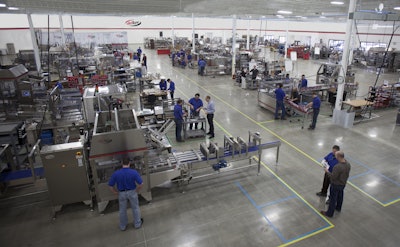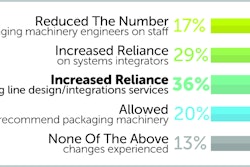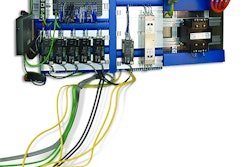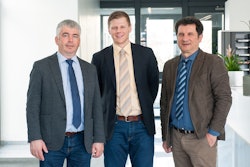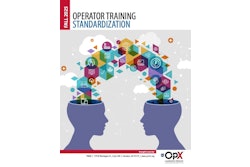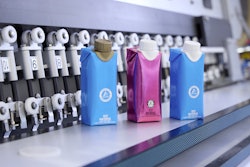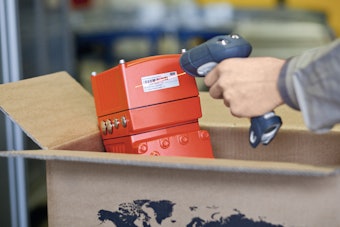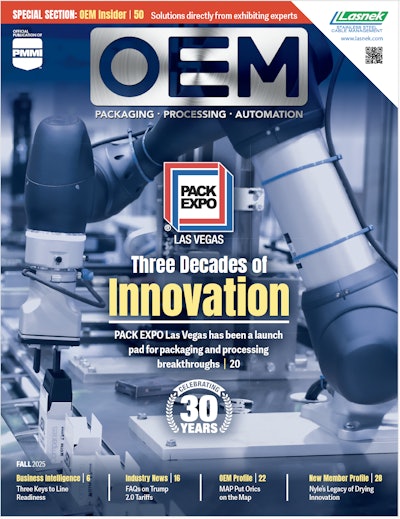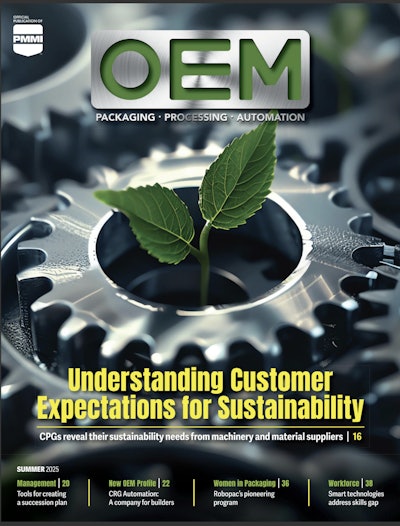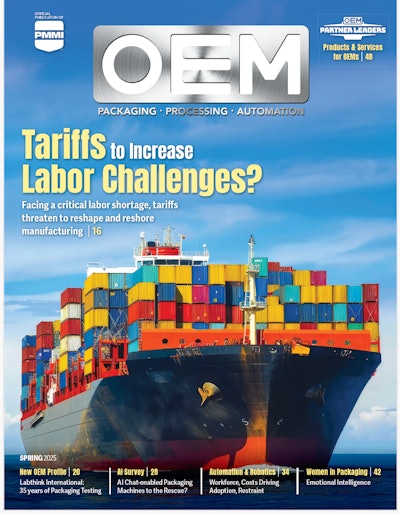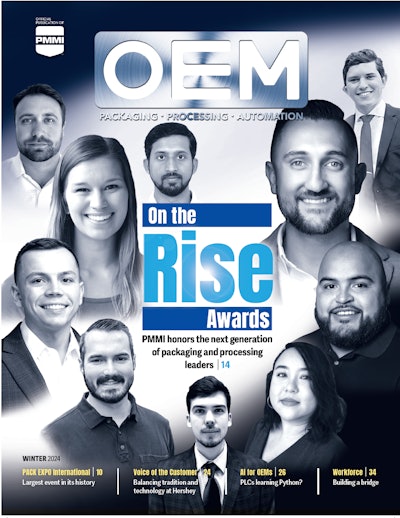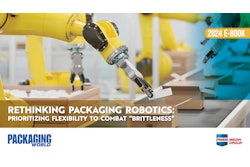When top management at Delkor decided in 2008 to alter their approach to new product development, it’s unlikely they foresaw the profound effect this decision would have. But what it’s done is transform their company from one that introduced maybe one new machine a year to one with regular roll-outs of new products.
Did it work? Consider that sales in 2008 were around $35 million, and in 2014, $62 million.
The strategy, explains CEO Dale Andersen, involved splitting the company into groups for “standard products” and “new development.”
“We even split our resources and made sure there was adequate funding earmarked specifically for new product development,” Andersen adds.
But just as Delkor completed this strategic realignment, the Great Recession hit. What seemed like a good idea in 2008 did not look quite as attractive in 2009.
“Suddenly we had all these resources focused on new product development when, like so many other OEMs, what we were really hurting for was orders,” Andersen says.
How to address this unforeseen dilemma? Laying off engineers was not a part of the answer. Instead, Delkor tripled its R&D budget.
“Needless to say, we wound up ‘owning’ a number of our newly developed machines, as customers able to buy them just weren’t out there,” Andersen says. “But by PackExpo in 2011, we had seven new machines at our booth, most of them for case packaging and cartoning, which are our strengths. The reward we experienced in 2011 for having invested as we had convinced us that our decision to split the company was, in fact, the right move.”
Rick Gessler, Director of Marketing & Strategic Account Management, emphasizes the importance of having R&D efforts that weren’t just funded, but also focused. A strong understanding of customer requirements allowed the company to accurately identify the market’s direction and introduce an appropriate packaging machinery solution.
Most of the time, the fundamental factor was flexibility.
“The machines we developed were capable of making not just one package the marketplace was calling for, but other popular package formats as well,” Gessler says. “That really resonated with our customer base. If they liked our solution, they could go with it and not be prevented from producing other package formats, too.”
So how does an OEM go about market testing a rather large and expensive piece of packaging machinery? Andersen is the first to admit its resource-intense nature. But he notes that one of the recession’s silver linings was the time it provided Delkor to get testing down to their complete satisfaction.
Gessler adds that having the right kind of relationship with customers is a huge help where market testing is concerned.
“The relationship needs to be on multiple levels,” he explains. “We work with everyone—maintenance, engineering, plant management, purchasing, and package design. And remember, it’s often the package design people who are driving a machinery development because they’re the ones who have this idea about something that’s more cost-effective or is better aligned with the needs of their customers.”
Andersen agrees, adding that a sufficient investment of capital is equally important.
“Some companies grow by acquisition, some do it organically as we have,” he says. “Either way, the capital investment must be consistent and considerable.”
And where does Delkor get the people who, after all, are the key ingredient to making all of this happen? Andersen is hesitant to respond, given the competitiveness of the Minneapolis talent market. But he admits the company recruits differently than it did six years ago. The company has stepped up its emphasis on outreach to various schools and organizations, including a collaborative relationship with the Department of Science and Technology at the University of Minnesota now getting underway.
“There’s been such a dynamic change in terms of how people look for work these days,” Andersen says. “Unemployment rates in our region are as low as you’ll find in the country. We have to be competitive, because we’re up against a bunch of great companies that are based here.”
Controls and the customization challenge
Like many other PMMI members, Delkor relies heavily on Rockwell Automation for its automation and machine control platform, from servo drives and motors to HMI to motion control to safety platforms. Such things are reviewed on a regular basis to decide if it’s time to refresh or revise or replace.
“We aren’t about to develop a new machine based on an old control platform, so I’d say we’re pretty much on the leading edge where Rockwell’s offerings are concerned,” says Andersen, who points to what he considers to be Delkor’s most significant technology development of 2014 —the rollout of the Model HSP-400 case packer for pouches. The Rockwell iTRAK®—a flexible linear motion solution that allows for independent control of multuple movers—in Delkor’s HSP-400 accepts and collates five pouches per second during the case packing process.
Gessler adds that all builders of packaging machinery need to find a profitable balance between cranking out standardized lines of equipment and customizing to meet specific
customer needs.
“There’s nothing worse than having a product line that doesn’t match up with your customer needs,” he says, describing the evaluation as a “funnel process.” As new projects emerge, each gets rated in terms of the standard machine modules it will utilize. Anything above a certain score gets reviewed by a team that determines if it’s worth doing engineering or development work to fulfill this project, or if the company should pass on it.
“As a project is creeping up the scale in the direction of being heavily custom, we typically will have an internal review with our engineering group to see what can be done to maybe adapt the way that the system functions to be more standard for us,” Gessler adds. “Sometimes a customer might think Machine 2.0 is essential when in fact Machine 1.0 is the better solution as long as a few modifications are made.”
Few OEMs these days can afford not to lean-out their processes wherever possible. At Delkor, significant progress has been made in the firm’s line of formers and closers.
“We’ve gotten to the point where we can almost bypass engineering and go from the configurable model right to manufacturing,” says Andersen. “Implementing standard assembly processes has helped us get pretty lean and mean on how we build these formers and closers.”
Delkor has also added dedicated build cells for these machines—the 5S workplace organization method that originated in Japan.
“Every tool has its place and the cell is kept neat and orderly at all times,” says Gessler. “It lets us assemble these formers and closers in a matter of days once the parts and kits are delivered to the cell.”
Keeping the customer involved from initial inquiry through factory acceptance is another hallmark of Delkor’s strategy. The company’s sales managers, all of whom have sound engineering backgrounds, have the ability to converse with everyone from the management offices to the machine operator and gain a clear understanding of what the customer is looking to do.
Once a Purchase Order is issued, Delkor’s project management team sends out a high-level schedule of events that will occur throughout the machine build. The list specifies not only key Delkor deliverables but also customer-supplied items from product samples to the precise dimensions of the customer’s dock door.
For Factory Acceptance Tests (FATs) Delkor is making greater use of video-sharing technology by recording a FAT with multiple cameras to show performance metrics, or providing “virtual FATs,” whereby a cart-mounted laptop with a camera is used to walk the customer around the machine. Customers can access the videos anytime at Delkor’s FTP site.
“Such technologies are certainly helpful,” Gessler says, “but almost 90 percent of our customers still fly into Minneapolis and visit our plant in person for the FAT.”
What’s next?
Among the many challenges on Andersen’s radar screen is the growing influence on packaging machinery design from retailers, particularly mass merchandisers.
“More than ever they’re using packaging to differentiate themselves, and that has a profound impact on how packaging lines will be designed,” says Andersen. “It will require considerable creative energy on the part of the OEMs, who will have to open themselves up to the possibility of entirely new package concepts.”
Gessler sees a related challenge on the horizon.
“As retailers move to retail ready-formats, many times it’s no longer acceptable to ship a 12- or 24-pack to a store,” he says. They want a smaller package size in many cases. But as you go from a 12-count to a 6-count, you’re talking about doubling your speed. I think we’re going to see a drive toward higher speeds in cartoning and case packing machinery.”
The best way for Delkor to meet these and the other challenges, says Andersen, is investing in its employee base.
“It’s incumbent upon us not only to hire the best new talent we can,” he says, “but also to ramp up our internal training programs to continue developing the talent we have in house.”
